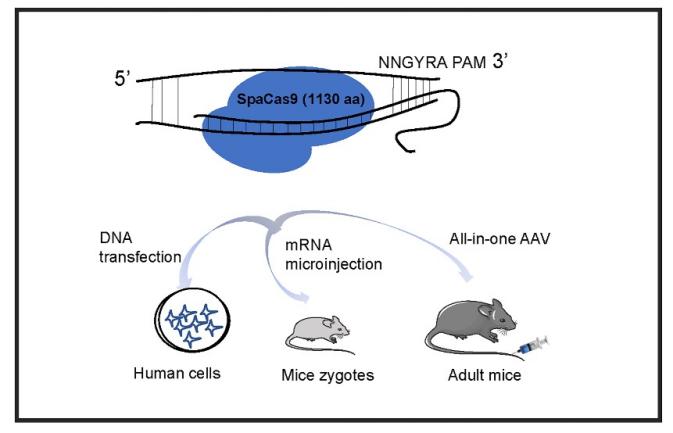Recently, Liu Zhiquan and Chen Siyu, doctoral students of theSchool of Animal Science, as coco-lead authors, Professor Lai Liangxue of theSchool of Animal Medicine and Professor Zhanjun Li ofthe School of Animal Science as coco-authors published a research article "VersatileandefficientinvivogenomeeditingwithcompactStreptococcuspasteurianusCas9" in the international academic journal MolecularTherapy, developed and optimized a new genome editing tool-SpaCas9, and applied it to animal model construction and in vivo gene therapy.The Lai Liangxue / LiLiangxue/Li Zhanjun research group has been committed to the optimization of gene editing technology and its application in humanized animal models for a long time. This research is supported by the National keyKey Research and Development Program 'Stem Cell and Transformation Research'.
Because the widely used genome editing tool SpCas9 exceeds 4.7kb7 kb, it is difficult to apply to Allall-in-oneAAVone AAV-mediated gene therapy, while other small Cas9 also face problems such as low efficiency and complex PAM limitations. In order toTosolve this scientific problem, the research group re-identifiedreidentified and optimized a small Cas9 gene editing system-,SpaCas9. After optimization, SpaCas9 has a unique NNGYRAPAM, which significantly improves the efficiency and specificity of gene editing. Furthermore, the gene editing animal of albinism was successfully constructed by using the optimized SpaCas9 system, and applied to All-in-oneAAV-mediated gene therapy, which successfully turned off the PCSK9 gene that leads to the increase of low density lipoprotein cholesterol, which proved the potential of this system in gene therapy, and provided a new and ideal gene editing tool for gene editing targeting liver and other organs.
